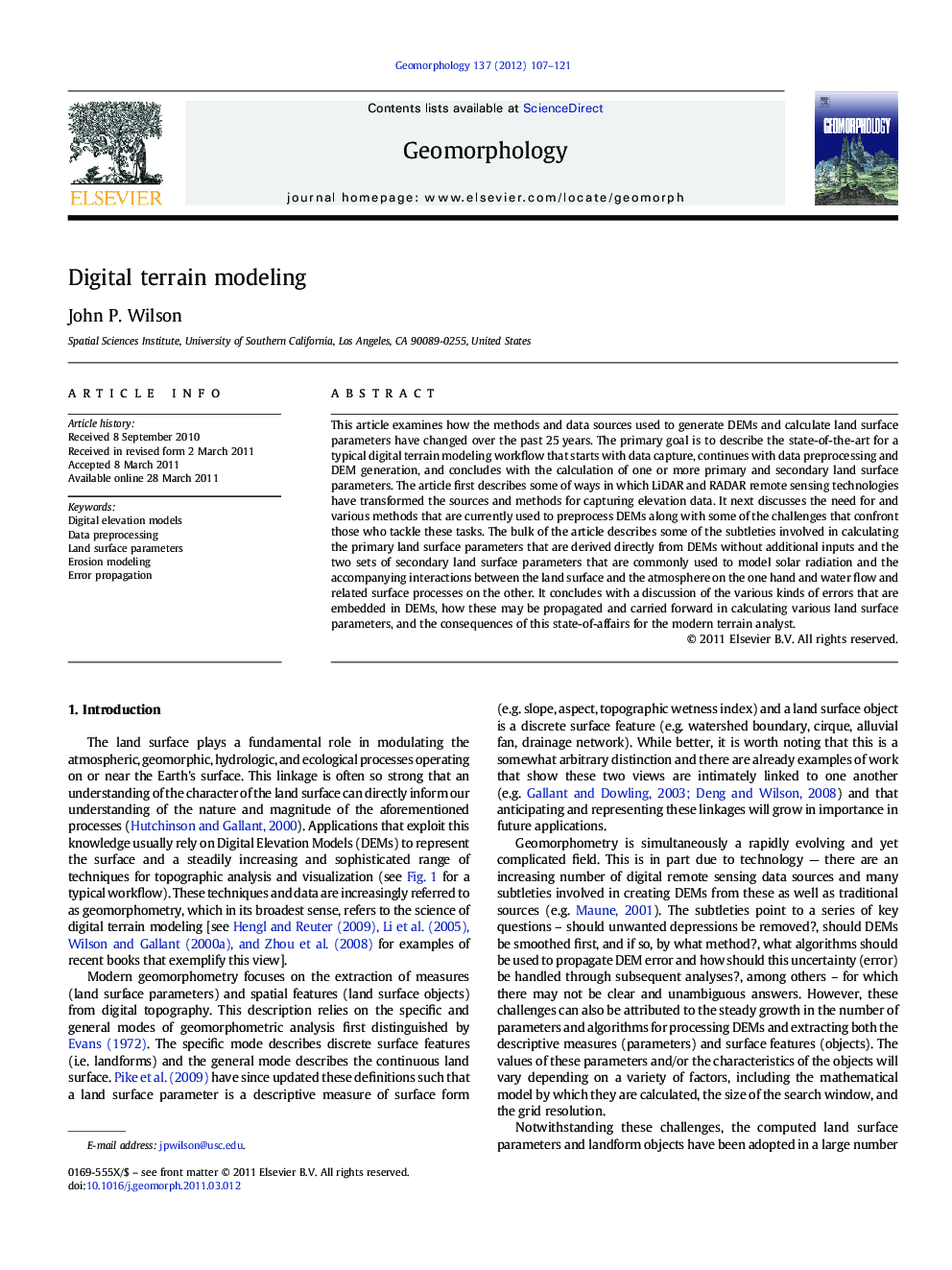| Article ID | Journal | Published Year | Pages | File Type |
|---|---|---|---|---|
| 4685499 | Geomorphology | 2012 | 15 Pages |
This article examines how the methods and data sources used to generate DEMs and calculate land surface parameters have changed over the past 25 years. The primary goal is to describe the state-of-the-art for a typical digital terrain modeling workflow that starts with data capture, continues with data preprocessing and DEM generation, and concludes with the calculation of one or more primary and secondary land surface parameters. The article first describes some of ways in which LiDAR and RADAR remote sensing technologies have transformed the sources and methods for capturing elevation data. It next discusses the need for and various methods that are currently used to preprocess DEMs along with some of the challenges that confront those who tackle these tasks. The bulk of the article describes some of the subtleties involved in calculating the primary land surface parameters that are derived directly from DEMs without additional inputs and the two sets of secondary land surface parameters that are commonly used to model solar radiation and the accompanying interactions between the land surface and the atmosphere on the one hand and water flow and related surface processes on the other. It concludes with a discussion of the various kinds of errors that are embedded in DEMs, how these may be propagated and carried forward in calculating various land surface parameters, and the consequences of this state-of-affairs for the modern terrain analyst.
